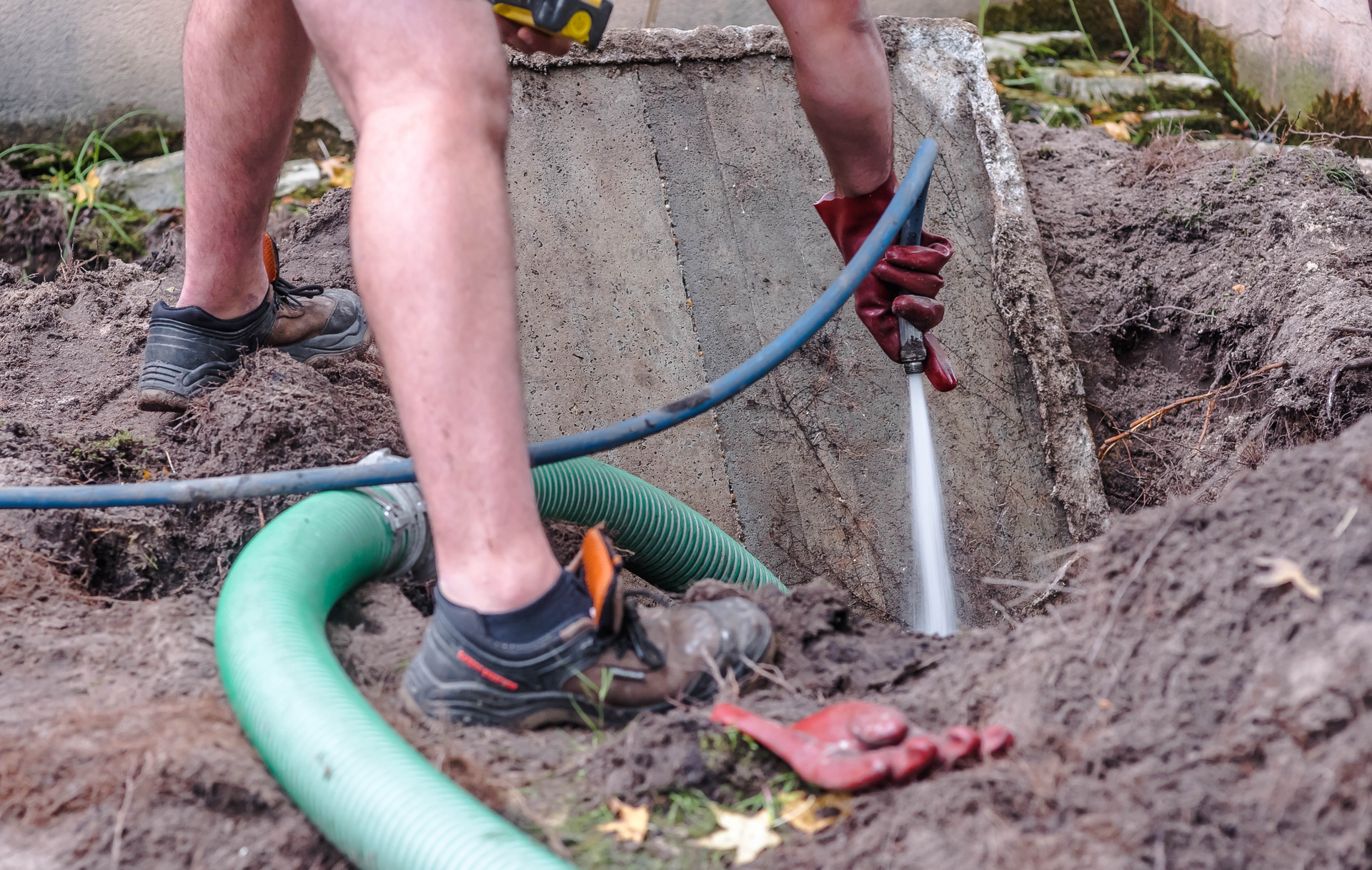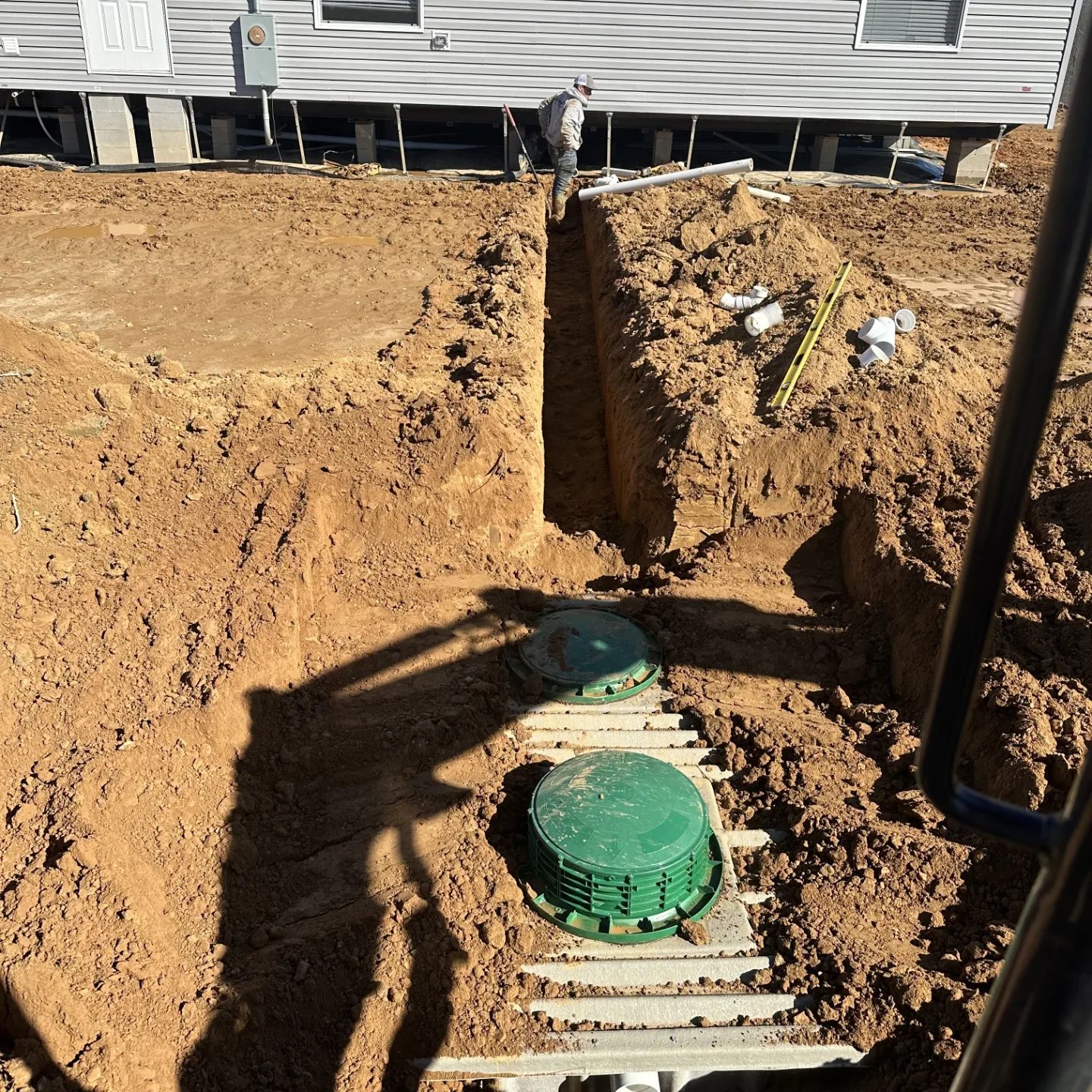Emergency Septic Service: What to Do When a Problem Arises
January 3, 2024
Emergency Septic Service: What to Do When a Problem Arises
Your septic system plays a vital role in managing household wastewater, and for the most part, it operates quietly and efficiently. However, septic system issues can arise unexpectedly, and when they do, they often require immediate attention. Understanding what to do in case of a septic emergency is crucial for preventing further damage, health hazards, and costly repairs. In this blog post, we'll explore common septic emergencies, what causes them, and the steps to take when facing such situations.
Common Septic Emergencies
1. Backed-Up Drains
A sudden backup of sewage into your home is a clear indication of a septic problem. This can result from a clogged drain field, a full septic tank, or a blockage in the plumbing.
2. Foul Odors
Strong, unpleasant odors around your septic system or inside your home are not only a nuisance but also a sign of trouble. It could signify a septic tank leak or a malfunctioning component.
3. Slow Drains
Sluggish draining sinks, tubs, or toilets can indicate a blockage or a septic system issue. Don't ignore this warning sign, as it can worsen quickly.
4. Pooling Water
Water pooling around your septic tank or drain field is a sign of a potential problem. It might indicate a leak or an overflowing tank.
5. Sewage Backup
When sewage starts to back up into your sinks, tubs, or toilets, it's a severe emergency that requires immediate attention. This can result from a clogged sewer line or a failing septic system.
Causes of Septic Emergencies
Understanding what causes septic emergencies can help you take preventative measures:
Lack of Maintenance: Neglecting regular septic system maintenance, including pumping, can lead to emergencies.
Excessive Water Usage: Overloading your septic system with excessive water use can cause backups and failures.
Flushing Non-Biodegradable Items: Flushing items like diapers, wipes, and sanitary products can clog your system.
Grease Disposal: Pouring grease down drains can lead to blockages and backups.
Tree Root Intrusion: Tree roots can infiltrate pipes and damage your septic system.
Old or Damaged Components: Aging or damaged septic tank components can result in leaks and failures.
What to Do in a Septic Emergency
Facing a septic emergency can be stressful, but knowing how to respond can minimize the damage and inconvenience:
Avoid Using Water: Reduce water usage as much as possible to prevent further stress on your system.
Stay Safe: If sewage has backed up into your home, avoid contact with it, as it can contain harmful bacteria.
Ventilate the Area: Open windows and doors to improve ventilation and reduce odors.
Call for Professional Help: Contact a reputable septic service provider like Oxford Septic Service in Oxford, MS, for emergency assistance.
Evacuate If Necessary: In extreme cases where sewage has flooded your home, consider temporarily relocating until the issue is resolved.
Preventing Septic Emergencies
Prevention is the best approach to avoid septic emergencies:
Regular Maintenance: Schedule routine septic tank pumping and inspections to catch issues before they escalate.
Mindful Water Usage: Be mindful of your water consumption and avoid excessive water use, especially during rainy seasons.
Proper Disposal: Dispose of non-biodegradable items, grease, and chemicals correctly, rather than flushing them down drains.
Landscaping: Be cautious when planting trees near your septic system to prevent root intrusion.
Septic-Safe Products: Use septic-safe household products to avoid harming your system's beneficial bacteria.
In conclusion, septic emergencies can be disruptive and costly, but with prompt action and preventive measures, you can minimize the impact on your home and finances. Remember that safety should always come first, and never attempt to handle a septic emergency on your own. Instead, contact a trusted septic service provider like Oxford Septic Service in Oxford, MS, to assess and resolve the issue professionally. Regular maintenance and responsible septic system care are your best allies in preventing emergencies and ensuring your system's longevity and efficiency.

Septic tank pumping is a crucial aspect of septic system maintenance that often goes overlooked by property owners. Regular pumping helps prevent costly repairs, prolongs the lifespan of the septic system, and protects the environment from contamination. In this guide, Oxford Septic Services shares valuable insights into the importance of routine septic tank pumping and its many benefits. Chapter 1: Understanding the Role of Septic Tank Pumping Overview of the septic tank pumping process and its significance in maintaining a healthy septic system Explanation of how septic tank pumping removes accumulated solids and sludge from the tank, preventing clogs and backups Chapter 2: Preventing Costly Repairs and System Failures Discussion of the potential consequences of neglecting septic tank pumping, including system backups, drain field damage, and groundwater contamination Exploration of the financial implications of septic system repairs and replacements compared to the relatively low cost of routine pumping Chapter 3: Extending the Lifespan of Your Septic System Explanation of how regular septic tank pumping helps prolong the lifespan of the septic system by reducing stress on system components and preventing premature failure Discussion of the correlation between routine pumping and the overall health and longevity of the septic system Chapter 4: Protecting the Environment and Public Health Examination of the environmental and public health risks associated with untreated wastewater discharge from poorly maintained septic systems Explanation of how routine septic tank pumping helps mitigate these risks by preventing groundwater contamination and protecting local water sources Chapter 5: Maintaining Property Value and Resale Potential Exploration of the impact of a well-maintained septic system on property value and resale potential Discussion of how routine septic tank pumping demonstrates responsible property ownership and can increase buyer confidence during real estate transactions Chapter 6: Ensuring Regulatory Compliance Overview of local regulations and requirements regarding septic system maintenance and pumping frequency Explanation of how routine septic tank pumping helps property owners remain in compliance with regulatory standards and avoid potential fines or penalties Chapter 7: Best Practices for Scheduling Septic Tank Pumping Recommendations for establishing a regular pumping schedule based on factors such as household size, water usage, and septic system capacity Tips for working with professional septic service providers like Oxford Septic Services to schedule timely and efficient pumping services Conclusion: Routine septic tank pumping is an essential aspect of responsible septic system ownership, offering numerous benefits for property owners, the environment, and public health. By understanding the importance of routine pumping and working with trusted professionals like Oxford Septic Services, property owners can ensure the long-term performance and reliability of their septic systems.

Installing a septic system is a critical step in ensuring proper wastewater management for residential and commercial properties. However, the installation process can be complex and requires careful planning and execution. In this comprehensive guide, Oxford Septic Services provides essential information and expert tips for homeowners and property owners considering septic system installation. Chapter 1: Understanding the Basics of Septic Systems Overview of septic systems and their components, including the septic tank, drain field, and distribution box Explanation of how septic systems function to treat and dispose of wastewater on-site, without access to a municipal sewer system Chapter 2: Assessing Site Conditions and Permitting Requirements Guidance on assessing soil conditions, topography, and site suitability for septic system installation Explanation of the permitting process and regulatory requirements for septic system installation, including obtaining necessary permits and approvals from local authorities Chapter 3: Designing the Septic System Overview of the steps involved in designing a septic system, including determining system size, layout, and location Discussion of factors to consider when designing a septic system, such as property size, soil type, and groundwater levels Chapter 4: Selecting and Installing Septic System Components Explanation of the different types of septic tanks, drain fields, distribution boxes, and other system components available for installation Step-by-step instructions for properly installing septic system components, including excavation, tank placement, piping installation, and backfilling Chapter 5: Ensuring Proper System Ventilation and Plumbing Connections Importance of providing adequate ventilation for the septic system to prevent the buildup of harmful gases, such as methane and hydrogen sulfide Guidelines for properly connecting plumbing fixtures, such as toilets, sinks, and showers, to the septic system to ensure efficient wastewater flow Chapter 6: Conducting Final Inspections and Testing Overview of the final inspection and testing process to ensure that the septic system meets all regulatory requirements and functions properly Explanation of common tests conducted during the final inspection, such as hydraulic load testing, dye testing, and soil percolation testing Chapter 7: Maintaining and Caring for Your New Septic System Recommendations for ongoing maintenance and care of the newly installed septic system, including routine pumping, inspection, and monitoring Tips for avoiding common pitfalls and ensuring the long-term reliability and performance of the septic system Conclusion: By following the guidelines and expert tips provided in this guide, property owners can navigate the septic system installation process with confidence. With careful planning, proper design, and professional installation by Oxford Septic Services, property owners can ensure the reliable operation and longevity of their septic systems for years to come.
